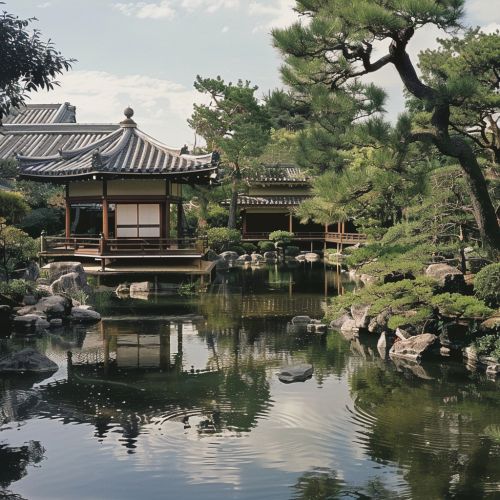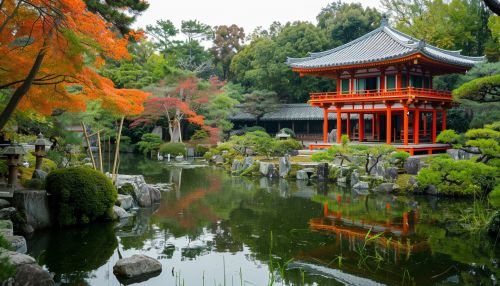Imperial Palace
Introduction
The term "Imperial Palace" refers to the official residence of a sovereign ruler, typically an emperor or empress. These palaces are often grand architectural structures that serve as the administrative and ceremonial centers of an empire. Throughout history, numerous imperial palaces have been constructed, each reflecting the cultural, political, and architectural ethos of its time.
Historical Overview
Imperial palaces have existed since ancient times, with some of the earliest examples found in Mesopotamia, Egypt, and China. These structures were not only residences but also symbols of the ruler's divine authority and power.
Ancient Mesopotamia
The Palace of Sargon in Dur-Sharrukin, built during the Neo-Assyrian Empire, is one of the earliest known imperial palaces. Constructed in the 8th century BCE, it featured extensive courtyards, administrative offices, and residential quarters. The palace was adorned with intricate bas-reliefs depicting the king's military victories and divine favor.
Ancient Egypt
In Egypt, the Palace of Amenhotep III at Malkata is a notable example. Built in the 14th century BCE, this palace complex included a vast array of buildings, gardens, and artificial lakes. It served as both a royal residence and a center for religious and administrative activities.
Ancient China
The Forbidden City in Beijing, constructed during the Ming Dynasty in the 15th century, is perhaps the most famous imperial palace in Chinese history. This sprawling complex includes nearly 1,000 buildings and covers an area of 180 acres. It served as the home of Chinese emperors and their households for almost 500 years.
Architectural Features
Imperial palaces are characterized by their grand scale, intricate design, and luxurious materials. They often include a variety of specialized structures such as throne rooms, audience halls, private apartments, and gardens.
Throne Rooms
The throne room is typically the most important room in an imperial palace. It is where the emperor conducts official ceremonies, receives foreign dignitaries, and holds court. These rooms are often lavishly decorated with precious materials such as gold, silver, and jade.
Audience Halls
Audience halls are large, open spaces used for public gatherings and official functions. They are designed to accommodate large numbers of people and often feature elaborate architectural elements such as columns, arches, and domes.
Private Apartments
The private apartments of the emperor and his family are usually located in the innermost part of the palace. These rooms are designed for comfort and privacy, often featuring luxurious furnishings and decorations.
Gardens
Gardens are a common feature of imperial palaces, serving as places of relaxation and reflection. They often include elements such as ponds, pavilions, and rockeries, designed to create a harmonious and serene environment.


Cultural Significance
Imperial palaces are not only architectural masterpieces but also cultural symbols. They reflect the values, beliefs, and artistic achievements of the societies that built them.
Symbol of Power
Imperial palaces are designed to impress and awe. Their grand scale and luxurious materials serve as a testament to the ruler's power and wealth. They are often located in strategic locations, such as the center of a capital city, to symbolize the central authority of the emperor.
Religious Significance
Many imperial palaces include temples and shrines dedicated to the worship of gods and ancestors. These religious structures are often integrated into the palace complex, reflecting the close relationship between political power and religious authority.
Artistic Achievements
Imperial palaces are often adorned with artworks such as paintings, sculptures, and tapestries. These artworks not only serve decorative purposes but also convey important cultural and historical narratives.
Notable Examples
Several imperial palaces around the world stand out for their historical and architectural significance.
The Forbidden City
As mentioned earlier, the Forbidden City in Beijing is one of the most famous imperial palaces. It served as the political and ceremonial center of Chinese emperors from the Ming to the end of the Qing Dynasty.
The Palace of Versailles
The Palace of Versailles in France is another iconic imperial palace. Originally a hunting lodge, it was transformed into a grand palace by King Louis XIV in the 17th century. The palace is renowned for its opulent architecture, extensive gardens, and the Hall of Mirrors.
The Winter Palace
The Winter Palace in St. Petersburg, Russia, served as the official residence of the Russian tsars from the 18th century until the Russian Revolution. The palace is a stunning example of Baroque architecture and houses the Hermitage Museum, one of the largest and oldest museums in the world.
Preservation and Conservation
Preserving and conserving imperial palaces is a complex task that involves maintaining their structural integrity, protecting their artistic and historical elements, and ensuring they remain accessible to the public.
Structural Integrity
Maintaining the structural integrity of imperial palaces often involves extensive restoration work. This can include repairing damaged foundations, reinforcing walls, and replacing deteriorated materials. Modern techniques such as laser scanning and 3D modeling are increasingly used to assess and plan restoration projects.
Artistic and Historical Elements
Protecting the artistic and historical elements of imperial palaces is equally important. This can involve cleaning and restoring artworks, preserving original furnishings, and documenting historical features. Conservationists often work closely with historians and archaeologists to ensure that restoration efforts are historically accurate.
Public Accessibility
Ensuring that imperial palaces remain accessible to the public is a key aspect of their preservation. This can involve creating visitor centers, providing guided tours, and developing educational programs. Balancing public access with the need to protect these historic sites is often a challenging task.
